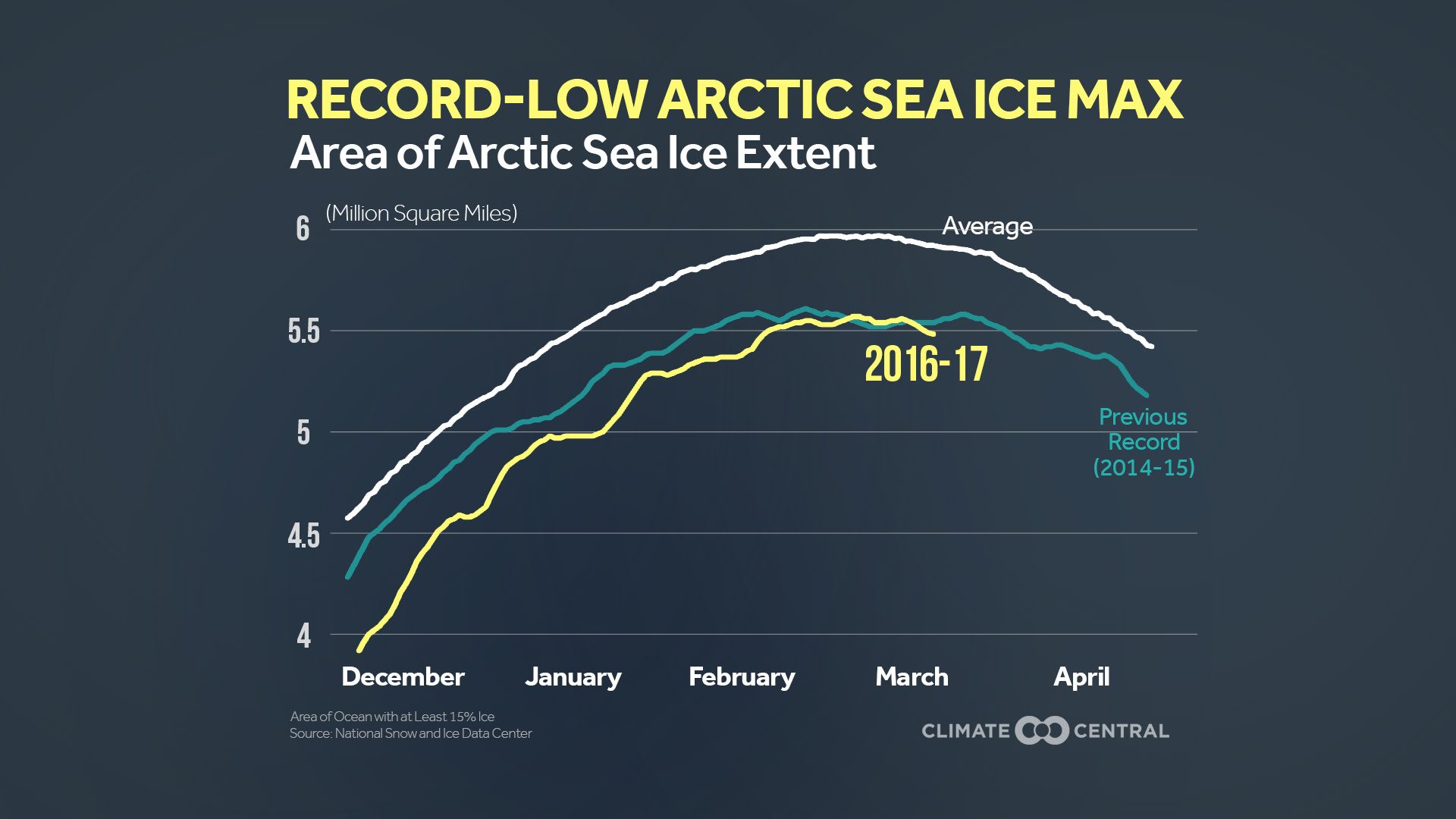We’ve got another sea ice record low in the books.
The National Snow and Ice Data Center announced today that Arctic sea ice hit a record low maximum extent for 2017 on March 7 at 5.57 million square miles. That makes this the third straight year with a record Arctic sea ice max.
• Arctic air temperatures were 4.5F (2.5C) degrees above average with an even higher temperatures above the northern Chukchi and Barents Seas.
• The multi-year sea ice in the Arctic is also thinner than it has been in recent years. The warmer and shorter freeze seasons are making it harder for the ice to freeze as thickly as the past, setting up thinner, more fragile ice going into the melt season.
“While the Arctic maximum is not as important as the seasonal minimum, the long-term decline is a clear indicator of climate change,” said Walt Meier, a scientist at the NASA Goddard Space Flight Center Cryospheric Sciences Laboratory and an affiliate scientist at NSIDC
Meanwhile, at the other pole, Antarctic sea ice extent also set a record low this year on March 3 at 815,000 square miles. This beats the previous minimum record sea ice extent from 1997. Antarctic sea ice has been highly variable the past few years. Just two years ago, the Arctic was setting record high daily sea ice extent readings and recorded a record high maximum winter extent in September 2014.
Sea ice goes through an annual freeze and melt cycle. For the Arctic, that melt bottoms out in September before refreezing, which usually maxes out in late February/early March. It is the opposite schedule in the Antarctic. Even though melting sea ice does not lead to sea level rise, it does set up a vicious feedback cycle that leads to more warming: more open water absorbs more heat, that warms the oceans, more sea ice melts and heat is added to the atmosphere. Also, less sea ice has been connected to increasing coastal erosion for Arctic communities, melting permafrost (which releases methane - a strong greenhouse gas), and altered fishing practices and animal behaviors.
You can find the full NSIDC report here.
• Climate Central story
• You can find sea ice digital content to share, including a video explainer, on our WXshift site.
• Our Attribution team looked at the role of climate change in the North Pole heat last November-December
Here are visuals from our previous Climate Matters to help tell the story:
2016 Arctic sea ice maximum extent (they revised the extent post this release)
2016 Arctic sea ice Sept. minimum extent
2015Arctic sea ice Sept. minimum extent (includes info about thinning multi-year ice)
